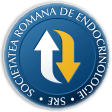
- Login
- Register
- Home/Current Issue
- About the journal
- Editorial board
- Online submission
- Instructions for authors
- Subscriptions
- Foundation Acta Endocrinologica
- Archive
- Contact
 Romanian Academy
Romanian Academy
 The Publishing House of the Romanian Academy
The Publishing House of the Romanian Academy

ACTA ENDOCRINOLOGICA (BUC)
The International Journal of Romanian Society of Endocrinology / Registered in 1938in Web of Science Master Journal List
Acta Endocrinologica(Bucharest) is live in PubMed Central
Journal Impact Factor - click here.

-
Case Report
Altay FP, Kulaksizoglu M, Fenkci SM, Yalcin N, Sagtas E
Ectopic TSH-Secreting Pituitary Adenoma in Nasopharyngeal RegionActa Endo (Buc) 2021 17(4): 521-527 doi: 10.4183/aeb.2021.521
AbstractObjective. TSH-secreting pituitary adenomas (TSH-omas) are very rare disorders. This report describes the diagnosis and treatment of a thyroid-stimulating hormonesecreting ectopic pituitary adenoma in the nasopharyngeal region. Subjects and Methods. We report a 37-year-old male patient with thyroid-stimulating hormone-secreting ectopic pituitary adenoma in nasopharyngeal region. Results. A patient suffering from sweating, palpitations, dizziness and abnormality in thyroid tests was referred to our clinic. Thyroid function tests showed high basal levels of free thyroxine (FT4), free tri-iodothyronine (FT3), and serum TSH. TRH stimulation test results indicated blunted response. Scintigraphy showed increased radionuclide uptake (iodine-123), and a thyroid ultrasound scan revealed diffuse enlargement of the thyroid gland. A pituitary MRI indicated a normal pituitary. However, MRI showed a mass in the nasopharynx that was confirmed with endoscopy. Endoscopic total endonasal resection was done and the mass was removed. The pathology reported a TSHsecreting pituitary adenoma. Conclusion. In this report, an identified case of thyroid-stimulating hormone-secreting ectopic pituitary adenoma in nasopharyngeal region is reported and it is the only tenth case in the literature indicated in the nasopharyngeal region. Ectopic TSH-omas should be considered during inappropriate secretion of TSH as a candidate cause to enable correct diagnosis and improve the treatment of patients. -
Case Report
Stojanovic M, Banjalic S, Golubovic T, Doknic M, Pekic S, Miljic D, Radojicic A, Jemuovic Z, Petakov A, Nikolic-Djurovic M, Petakov M
Gradual Spontaneous Regression of a Large Pituitary Mass - Should We Trust the Time to Heal Some Wounds?Acta Endo (Buc) 2024 20(4): 522-527 doi: 10.4183/aeb.2024.522
AbstractIntroduction. Spontaneous intracranial hypotension (SIH) is defined by reduced CSF pressure without an identifiable cause, hallmarked by acute onset of severe postural headache. Overlapping clinical presentation, MRI appearance, laboratory findings and prevalent risk population, may lead to diagnostic challenges in distinguishing SIH from the more common pituitary adenoma apoplexy (PAA). Cardinal MRI characteristics of SIH may be overlooked if sellar region examination is not coupled with a comprehensive cranial MRI examination. Pituitary enlargement in SIH was described with increased prevalence, but mostly as an incidental observation in neuroradiological series, without detailed functional pituitary assessment or follow-up. Case report. A young female with SIH presented with an intra-suprasellar mass lesion, imitating PAA. Mildly affected pituitary function, absence of visual impairments, and favorable clinical course influenced the decision against urgent pituitary surgery. Subsequent MRI confirmed spontaneous regression in pituitary size in first 5 months, along with clinical, hormonal and perimetric stability. Her initial mild central hypocortisolism resolved spontaneously, while baseline and follow-up dynamic pituitary assessment revealed no other abnormalities. Subsequent 9 years of endocrinological and neuroradiological follow-up confirmed gradual spontaneous pituitary lesion reduction. Awareness is raised that SIH may constitute a diagnostic pitfall due to clinical, neuroradiologic and laboratory overlapping with PA apoplexy, potentially leading to unnecessary surgery. -
Letter to the Editor
Ulhaq Z, Soraya GV, Zambrano LEA, Garcia CP
Sexual Dimorphism In Sars-Cov-2 InfectionActa Endo (Buc) 2020 16(4): 522-523 doi: 10.4183/aeb.2020.522
AbstractPrevious studies have demonstrated that female patients with coronavirus disease 2019 (COVID-19) demonstrate more favorable prognosis relative to male patients. In this article, we elaborate the possible role of estrogen in the modulation of severe acute respiratory syndrome coronavirus 2 (SARS-CoV-2) infection severity. The potential interplay between several factors, including inherently lower estradiol (E2 ) and slightly higher estrogen receptor β (ERβ) levels in males, with inflammatory mediators are described. Altogether, there seems to be a sexually dimorphic response towards SARS-CoV-2 infection, and a possibility that COVID-19 severity is dependent on both E2 levels and ERα:ERβ expression ratio in lymphoid and lung cells. -
Case Report
Stumpf MA, Schrut GCA, Ramthun M, Onuma S, Osternack HC
Methimazole-Induced Agranulocytosis and Sepsis: was Thyroid Storm Present or Just Being Mimicked?Acta Endo (Buc) 2019 15(4): 522-525 doi: 10.4183/aeb.2019.522
AbstractIntroduction. Agranulocytosis induced by thioamides is rare, occurring only in 0.2-0.5% of cases. Case presentation. We present the case of a 45-year-old woman previously diagnosed with Graves’ disease that discontinued the use of methimazole on her own. She attended the Emergency Department presenting fever (40.5¯C), agitation and diaphoresis. A thyroid storm diagnosis was initially thought, but after laboratory results showing neutrophil count near 0.06x109/L, sepsis due to neutropenia seemed the most logical hypothesis. Cephepime was promptly initiated. For thyrotoxicosis management, cholestyramine and atenolol were prescribed. In her second day of hospitalization, subcutaneous granulocyte colonystimulating factor was started for an earlier medullar response. The patient was discharged after 7 days with atenolol 50mg/ day and instructed to have a definite treatment for Graves disease as soon as possible. Conclusion. Such case purpose is to remember clinicians that sepsis diagnosis can be challenged, especially when a thyroid storm is a possible diagnosis as well. In this particular case, both conditions should be treated, but life-threatening sepsis should have the focus for a quick therapeutic approach. -
Case Series
Badan MI, Piciu D
Immunohistochemical Markers and SPECT/CT Somatostatin-Receptor (99MTCTEKTROTYD) Uptake in Well and Moderately Differentiated Neuroendocrine TumorsActa Endo (Buc) 2022 18(4): 523-530 doi: 10.4183/aeb.2022.523
AbstractContext. Diagnosis of primary NETs (neuroendocrine tumors) is challenging and often late due to tumor heterogeneity, and a wide variety of general symptoms. Low grade NETs are often indolent and have a good prognosis, especially in the early stages. Even so, some tumors are diagnosed using SPECT/CT either in the metastatic stage or directly as a metastasis with an unknown primary tumor. Objective. This study aims to characterize well and moderately differentiated NETs, using Tektrotyd SPECT/CT imaging as well as from the viewpoint of NET immunohistochemical biomarker expression. Design. Patients diagnosed with low grade neuroendocrine tumors (carcinoids) investigated over a period of 2 years, using SPECT/CT with 99mTc-EDDA/ HYNIC-Tyr3-Octreotide (Tektrotyd) and confirmed through at least two immunohistochemical neuroendocrine markers were evaluated. Subjects and Methods. Twenty-seven cases with neuroendocrine tumors were analyzed. Four patients met the inclusion criteria. Staining intensity was scored using a weak, moderate, or strong scoring system. CD56 was quantified using criteria derived from Her2 cell membrane staining evaluations. Results. Patients included in the study had two well differentiated (G1) NETs and two moderately differentiated (G2) NETs. SPECT/CT with Tektrotyd showed variable intensity ranging from discreet to strong. All tumors expressed chromogranin A with at least moderate intensity, weak to moderate intensity for synaptophysin and variable CD56 intensity. Conclusions. Chromogranin A and synaptophysin staining patterns may aid in primary tumor identification. CD56 stain intensity showed an inverse correlation with Tektrotyd uptake in carcinoids. Additional studies merit further investigation for use in clinical settings. -
Case Series
Cotiga AC, Gorbanescu A, Luca A, Vladislav EO, Zivari M, Ionescu D, Nica S
Burnout Prevalence in Intensive Care Unit, General Surgery Unit and Emergency Unit. A Romanian StudyActa Endo (Buc) 2023 19(4): 523-528 doi: 10.4183/aeb.2023.523
AbstractObjective. This study aims to investigate the effect of job characteristics and protective factors on burnout, one of the common medical staff issues. So far, little attention has been paid to testing protective factors' role on medical staff exhaustion. Design. Using a correlation design, these constructs were tested on a sample of 221 participants, doctors, and nurses. Main Outcome. The present study revealed protective factors power in predicting burnout, over job characteristics, and the moderation effect of role-playing in the medical care unit and clinical department. Measures. For assessing burnout were used a Romanian translated version of the Maslach Burnout Inventory – General Survey (MBI). Results. Protective factors like physical activities, vacation, and hours spent with family introduced an explanatory model and had a predictive validity over job characteristics in predicting medical staff's burnout. Finally, the effect of physical activities on burnout was moderated both by the role played in the medical care unit and clinical department, while the effect of time served in other medical institutions was moderated only by the role played in the medical care unit. Conclusion. These results provide guidance for better burnout programs interventions, which are addressed to medical healthcare experts. -
Book Review
Badiu C
Textbook of Nephro-Endocrinology: 2nd EditionActa Endo (Buc) 2017 13(4): 523-523 doi: 10.4183/aeb.2017.523
Abstract- -
Endocrine Care
Erol V, Makay O, Nart D, Ertan Y, Icoz G, Veral A, Akyildiz M, Yilmaz M, Yetkin E
Review of Thyroid Cytology and Histology Slides in a Tertiary Centre Leads to a Change in Planned Surgical Treatment for Patients with Thyroid NodulesActa Endo (Buc) 2011 7(4): 523-528 doi: 10.4183/aeb.2011.523
AbstractAim. Histology and cytology consultations of thyroid fine needle aspiration biopsy (FNAB) of thyroidectomy specimens can change management of the patient. We aimed to determine compliance rates of pathology results between urban centers and a tertiary institution and its impact on patient management.\r\nMethods. This retrospective study includes 101 patients, who were referred to our center, between January 2008 and December 2008. After admission, all FNAB or thyroidectomy specimens of patients managed elsewhere were consulted by the pathology department. Comparison of FNAB and histology reports of our institution and the medical centers elsewhere had been carried out.\r\nResults. A total of 76% concordance rate was found between the FNAB results of other centers and consultation results. The highest concordance was observed in the malignant cytology group (77%). The cytological or histological outcomes of 24 (23.7%) patients were interpreted differently. After second opinion, patient management\r\nchanged in 21 of the 101 patients.\r\nConclusion. Since FNAB results can change the type of surgical treatment and the management plan, the results especially reported as suspicious may need a second\r\nopinion. We suggest that cytology or histology results of thyroid patients referred to tertiary centers for further evaluation and treatment should always be reviewed. -
Perspectives
Trifanescu RA
Primary Hyperaldosteronism - The most frequent cause of endocrine secondary hypertensionActa Endo (Buc) 2012 8(4): 523-527 doi: 10.4183/aeb.2012.523
Abstract- -
Case Report
Streb G, Bleich D
Calcimimetic Treatment of Remnant Hyperparathyroidism After Near-Total ParathyroidectomyActa Endo (Buc) 2015 11(4): 524-528 doi: 10.4183/aeb.2015.524
AbstractContext. We propose that the underlying etiology of renal calcium leak is complex and involves defects in renal handling and parathyroid sensing of ambient calcium concentration in the tubular fluid and blood. Therefore, treatment of such a patient requires both decreasing the parathyroid mass and inhibiting calcium sensing receptors that are present in the parathyroid and kidney. However, a combined treatment strategy of three-gland parathyroidectomy and calcimimetic therapy has not been formally studied to date. Objective. To present a patient with renal calcium leak causing secondary hyperparathyroidism presenting as primary hyperparathyroidism. There are a two year followup period. Results. A patient with mild hypercalcemia, hypercalciuria, musculoskeletal pain, and recurrent kidney stones underwent a three gland parathyroidectomy and had persistent hypercalciuria post-operatively. She was subsequently treated with thiazide diuretic that caused dramatic decrease in hypercalciuria, but overt hypercalcemia. She was then treated with Cinacalcet with normalization of intact PTH, serum calcium and serum phosphate. Conclusion. Patients with hypercalciuria and mild hypercalcemia may have secondary hyperparathyroidism. Renal calcium leak drives hyperparathyroidism and is unresponsive to parathyroidectomy or thiazide diuretic alone. In our patient, three gland parathyroidectomy plus calcium –sensing mimetic agent, Cinacalcet, normalized serum calcium, PTH, and phosphorus. Defects in calcium sensing in the parathyroid gland and kidney might be responsible for this form of secondary hyperparathyroidism.